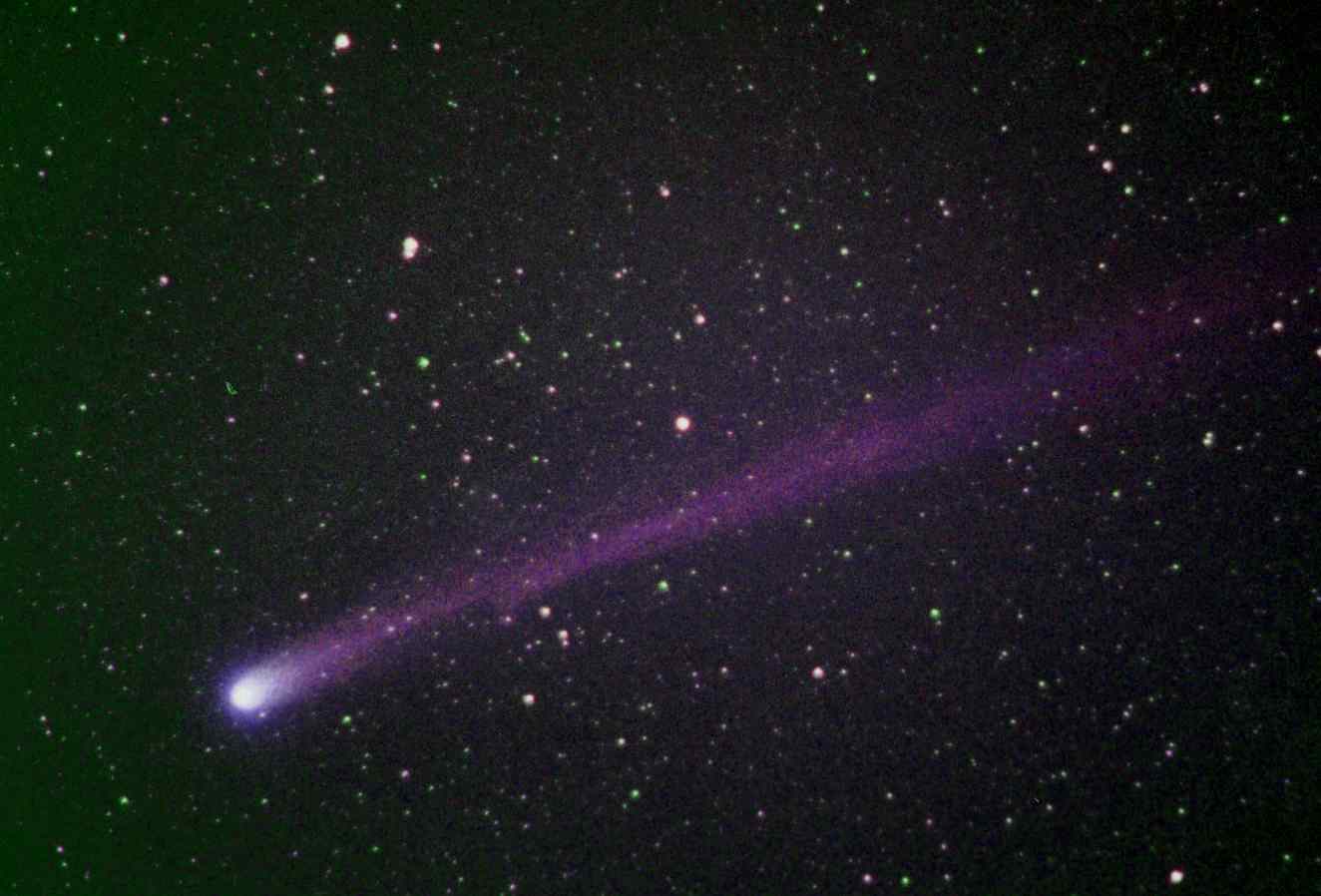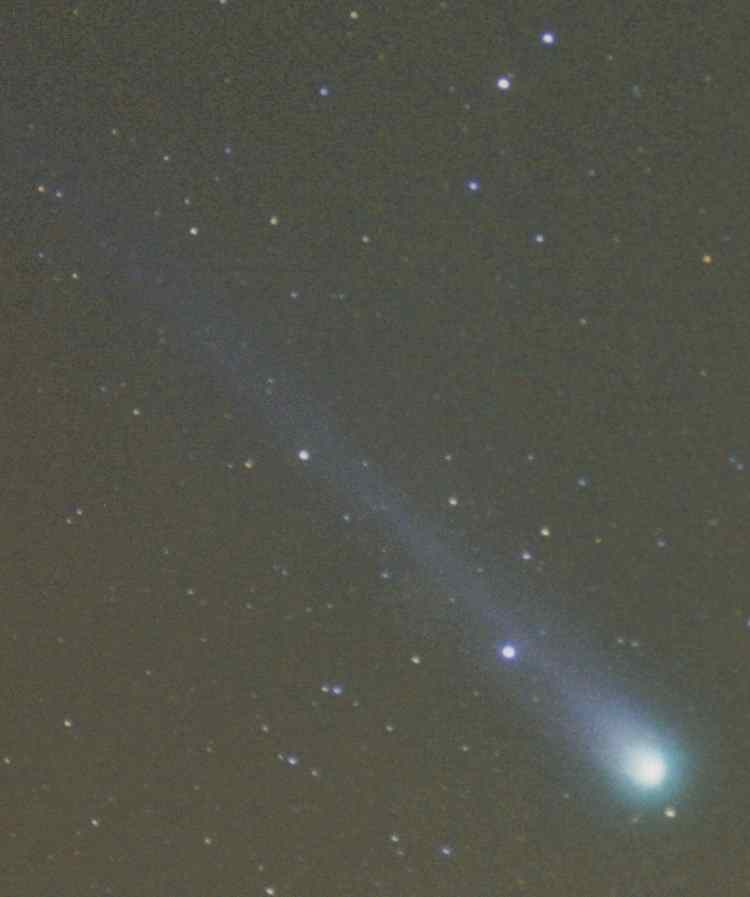Copyright 2008 Starry Mirror



The
TM
Astronomy From West Virginia
REMEMBERING COMET HYAKUTAKE'S 1996 FLYBY
BRIDGEPORT, WV (S-M) - It will be thirteen years this Spring since Comet Hyakutake,1996/B2, flew by the Earth and provided us with one of the greatest comet displays of recent centuries. This comet will always hold a special place in our hearts here at the Starry Mirror, as it marked the end of a long dry spell in great comets. Not since Comet West in 1976 had a fantastic comet graced our skies. Comet Halley had proven to be a spectacular, if perfectly foretold, flop in 1986. Hyakutake, along with other comets from the mid-1990's, sparked a renewed interest in these objects.
When the comet was discovered by Yuji Hyakutake on January 30, 1996, comet watchers were already in a state of excitement. Less than two years before, Comet Shoemaker-Levy 9 had crashed into Jupiter. Furthermore, in the Summer of 1995 Comet Hale-Bopp had been discovered, and it was clear that it could become a great comet in 1997. In the Fall of 1995, Comet DeVico was rediscovered after being lost for seventy years, and it just reached naked eye visibility. One popular astronomy magazine asked if DeVico were the "Prelude to the Big One" - the "Big One" being Hale-Bopp. Even Mr. Hyakutake had found his first, fainter comet in the last week of 1995. The great comet was to be his second find.
We recall well when we first heard the news of this new, more important comet's discovery. It was on Monday, February 5, 1996, just a few days after the find. We made a call to the SkyLine service in Cambridge, Massachusettes to listen to the recording. Because of the big news, the recording, which was normally updated on Fridays, had been updated with a bulletin. The message stated that the new comet would probably become a fantastic sight, and that it would pass close by the Earth in late March. Our excitement grew, and we prepared what equipment we had which would be useful.
We first spotted the comet in early March as a greenish patch high in the East in the late evening hours. It was around one degree in diameter and elongated, like a potato. Although it is always uncertain whether a comet will remain bright or fizzle, Hyakutake was holding up well, and as the comet became larger in our sky, it became clear that we were in for the kind of celestial event that comes along only once or twice in a lifetime. (Click at left to continue.)

Comet Hyakutake, photographed here at our observatory in Bridgeport, West Virginia in late March, 1996.

A closer view of the comet's coma.